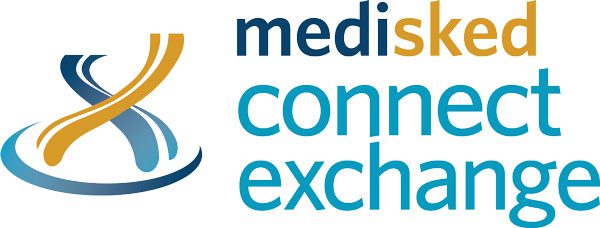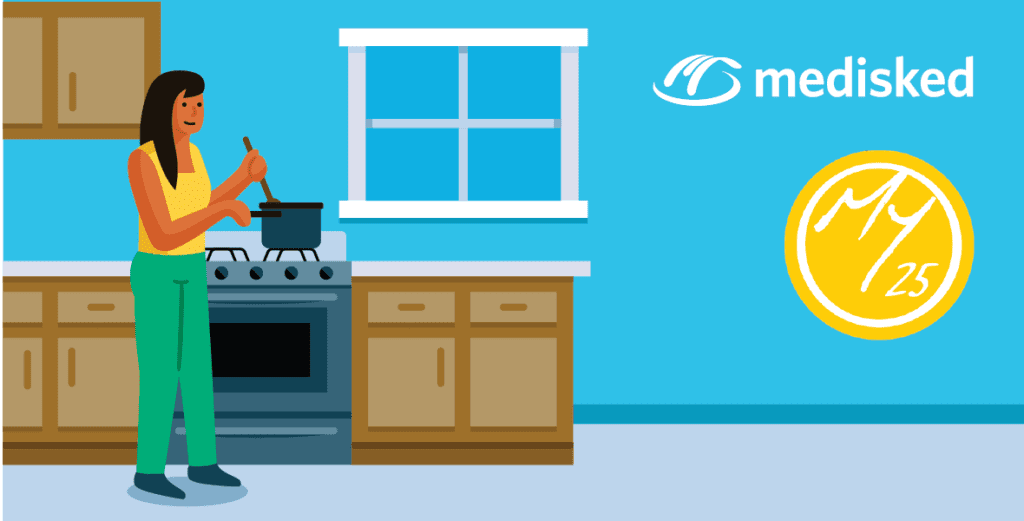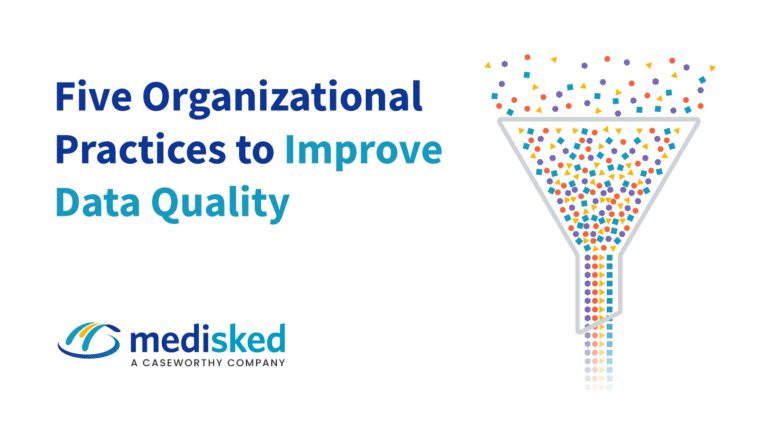Recently, obesity was added to the list of factors contributing to a higher risk of complications and fatality from COVID-19. With 70% of people in long term services and supports (LTSS) settings reportedly outside the range for a normal Body Mass Index (BMI), this is clearly a significant concern. Individuals in LTSS settings struggle with two to three times the rates of obesity, overweight status, and diabetes as those in non-LTSS settings, making it more important than ever to eat healthy, balanced meals during the current pandemic.
Grocery store trips during the pandemic have become stressful and less frequent, with some staple items out of stock, making it harder to plan nutritional meals. To help, MediSked has partnered with the experts at Mainstay and their My25 program to put together some advice on nutritious staples and diet cornerstones that can be used to create healthy, delicious meals in any setting.
“During the pandemic food shortages vary between regions at any one point in time. The good news is that most grocery shortages are short-lived and shelves are consistently restocked. We suggest making substitutions when confronted with these temporary challenges, and we’re happy to help with tips that are both healthy and budget sensitive.”
– Jim Vail
President & CEO of Mainstay/My25
Fiber
The World Health Organization reports that people should eat at least five portions of fiber a day[1]. Fiber is found in many foods, including most fruits and vegetables. Frozen fruits and vegetables are great options and they retain more of their nutritional value than their canned counterparts. If fresh products are in short supply, there are other ways to get your daily fiber:
- Beans and legumes – the options are endless here from chickpeas to black beans
- Quinoa
- Oats
- Popcorn
- Almonds
- Whole wheat pasta
- Whole grain bread
- Barley
Healthy, fiber-filled starches don’t have to be plain. Check out My25’s Jazz Up Healthy Starches Resource to learn how to make your food taste better. Looking to add more fiber into your current diet? My25’s How to Fiberize resource offers tips for adding high-fiber ingredients to everyday foods. (Be sure to enter My25 when prompted to access their library of resources.)
Zinc
Zinc is an important nutrient that is reported to help immune system metabolic function.[2] While Zinc supplements might be hard to find on store shelves, Zinc is found naturally in many different foods. One of the best sources of Zinc is meat. However, here are some shelf-stable alternatives to consider and many of these will help with fiber intake as well.
- Seeds – pumpkin, flax, sunflower
- Nuts – pine nuts, cashews, almonds
- Eggs
- Whole grains – quinoa, oats, rice, and wheat
Healthy Alternatives and Spicing up Meals
Don’t see what you are looking for here? My25 has a vegetable and fruit substitution list where you can view alternative foods to get your nutrients. Having trouble finding all the herbs and spices you need to make your dishes taste great? Check out this guide to growing an indoor herb garden from My25.
Nutrition & Preventive Health During COVID-19
According to the U.S. Burden of Disease Collaborators, poor diet is the leading cause of poor health in the U.S., causing more than half a million deaths per year.[3] Health officials confirm that COVID-19 severity and death rates are substantially heightened due to underlying conditions such as obesity, diabetes, and hypertension. A new article from the New York Times noted that only 6% of COVID hospitalizations included people without underlying chronic conditions related to obesity, diabetes and hypertension.[4]
COVID-19 Resources:
[1] The World Health Organization. https://www.who.int/news-room/fact-sheets/detail/healthy-diet. October 23, 2018.
[2] The Mayo Clinic. https://www.mayoclinic.org/drugs-supplements-zinc/art-20366112
[3] The US Burden of Disease Collaborators. The State of US Health, 1990-2016: Burden of Diseases, Injuries, and Risk Factors Among US States. JAMA. 2018;319(14):1444-1472.
[4]The New York Times. https://www.nytimes.com/2020/04/23/health/coronavirus-patients-risk.html?algo=identity&fellback=false&imp_id=44811471&imp_id=585320754&action=click&module=Science%20%20Technology&pgtype=Homepage








